 By the way, have you heard Dan Brown has a new novel out? The Lost Symbol is setting sales records and, naturally, has the Masonic world wondering what its impact on the fraternity will be. Early concerns remembered the treatment Opus Dei received in Brown’s previous mega-seller, The DaVinci Code, which portrayed the Roman Catholic lay organization as practically a murder cult, and wondered if Freemasonry was in for a similar ride.
By the way, have you heard Dan Brown has a new novel out? The Lost Symbol is setting sales records and, naturally, has the Masonic world wondering what its impact on the fraternity will be. Early concerns remembered the treatment Opus Dei received in Brown’s previous mega-seller, The DaVinci Code, which portrayed the Roman Catholic lay organization as practically a murder cult, and wondered if Freemasonry was in for a similar ride.Truly, nothing could be further from the truth. In fact, the problem posed by The Lost Symbol is that Freemasonry is presented with too much idealism. Dan Brown’s Freemasonry consists of the most powerful men in Washington – the Senate Majority Leader, the Director of Central Intelligence, the Secretary of Homeland Security, et al. – not united in a conspiracy to oppress and exploit, but banded together to preserve ancient wisdom until the time is right to reintroduce humanity to these mysteries.
Establishing parallels between, to borrow a title, the Secret Teachings of All Ages and noetic science, which in the story is explored by a lone scientist toiling inside a secret lab on the campus of the Smithsonian Institution, our author echoes a stirring message imparted by none other than Robert Davis and Jim Tresner, two of the leading educators of the Scottish Rite of Freemasonry. Incidentally (or maybe not merely incidentally), the Scottish Rite is the specific form of Freemasonry the novel explores.
At the 2004 session of New Jersey Council of Deliberation, Bob and Jim were flown in from Oklahoma to speak on the potential Scottish Rite Masonry has to stir within its brethren the desire to help mankind recognize a new phase of collective awakening. The talk was so well received that Ill. Davis was brought back in 2006, when he presented his paper titled “The Purpose of the Scottish Rite and the Spiritual Awakening of the New Millennium: an Unworldly Partnership.”
Excerpted:
My Brethren, in the history of the world, there have been two periods when a spiritual awakening has taken place across every culture at the same time; where a striking transformation of consciousness occurred in unison across every major population group – all independently of one another – and which resulted in a re-definition of religion and a global awakening of man’s understanding of things spiritual and religious. These have been called Axial Periods because they gave birth to everything which, since then, man has been able to be. It was during these periods that we meet with the most deepcut spiritual dividing lines in history.
The first, and most profound period, occurred in a 500-year span from 800 B.C. to 300 B.C. It was during this time that China saw its two great teachers, Confucious and Lao-tze, from whose wisdom emerged the schools of Chinese philosophy. In India, the Hinduism of the Vedas was transformed by the Upanishads, which changed Hinduism from a polytheistic to a monotheistic religion; where Buddha, the “Awakened One” and Mahavira ushered in two new religious traditions – Buddhism and Janism. The concept of individual enlightenment came from this tradition. In the eastern Mediterranean region, the transformative prophets – Elijah, Isaiah, and Jeremiah, called forth from their people a new moral awareness which took Judaism to a higher level based on individual moral responsibility and where the idea of a messiah came into being. In Greece, Western philosophy was born. From Phales and Socrates to Plato and Aristotle, a new rational explanation of the universe was conceived; where moral consciousness was awakened and new metaphysical systems were born. “Know Thyself” became the watchword.
It was an extraordinary global transformation. Although the leaders who effected this change were philosophers and religious teachers, the change was so radical that it affected all aspects of culture because it transformed consciousness itself. It was, in fact, within the horizons of this form of consciousness that the great civilizations of Asia, the Middle East, and Europe developed. It was this form of consciousness that spread to other regions and became dominant worldwide. It was a consciousness that was self-reflective, analytical, and which could be applied to nature in the form of scientific theories, to society in the form of social critique, to knowledge in the form of philosophy; to religion in the form of mapping an individual spiritual journey. To this day, regardless of where we have been born, we live in the structure of consciousness that was shaped in this 500 year period. And it was within this structure that the intellectual and spiritual substance of Freemasonry was born....
Western civilization as we know it today is the product of four great movements that occurred over another 400-year period, all tied to the structure of consciousness which came out of the first Axial Period. These four movements were the Renaissance, the Reformation, the French Revolution, and the Industrial/Social Revolution....
It is time that we create an identity for the Scottish Rite that is uniquely ours in the family of Freemasonry – one which focuses on this original intent of our enlightened society of men....
We are moving into a new Axial Period.... We are on the cutting edge of something bigger than we know and, like the first Axial Period, the new one will redefine traditional paths of spirituality and shape the horizon of consciousness for future centuries. It too will have a great significance for world religions; and it will be driven by both an individual consciousness and a global one. And since this development will be global and connected with new forms of technology, religious futurists are suggesting that we can expect to see a convergence of cultures and religions this time, rather than a division as occurred in the first Axial Period. This has enormous implications for the Scottish Rite.
Seekers of Truth will search each other out and meet in conditions and atmospheres of mutual trust and understanding, with an eagerness to alter misconceptions about each other and prepared to appreciate the values of the other. Dr. Ewert Cousins, Professor of Religious Studies at Fordham University, forecasts that “the partners of this new conscious-raising enterprise will be mutually enriched by passing over into the consciousness of the other and discovering the synthesis of the greater and higher goal of their collective awakening.” In Masonry, we have long defined this as the search for the Lost Word....
I would love to give you all 4,262 words, but you get the idea. (To read more about Robert’s talk, click here, scroll down to the August 2006 issue of The Northern Light magazine, open the PDF, and turn to page 7.) For his part, Dan Brown crafts his protagonists as like-minded strategic thinkers. Brown, the optimist – maybe even the gnostic – wants his readers to view humanity as a brotherhood of man under the fatherhood of god, a global family poised to receive the wisdom of the ages, cleansed of obfuscatory dogma and stunting superstition. The message is delivered obliquely by the mystics of Masonry (not revealing too much to the uninitiated), but bluntly by the scientist. From page 504:
Katherine propped herself on her elbow. “And I promise, if we as humans can honestly grasp this one simple truth, the world will change overnight. I should preface this,” she said, “by reminding you of the Masonic mantras to ‘gather what is scattered,’ to bring ‘order from chaos,’ to find ‘at-one-ment.’ We have scientifically proven that the power of human thought grows exponentially with the number of minds that share that thought.”Okay, I added the Magpie part.
Langdon remain silent, wondering where she was going with this idea.
“What I’m saying is this. Two heads are better than one, and yet two heads are not twice better, they are many, many times better. Multiple minds working in unison magnify a thought’s effect exponentially. This is the inherent power of prayer groups, healing circles, singing in unison, and worshipping en masse. The idea of universal consciousness is no ethereal New Age concept. It’s a hard-core scientific reality, and harnessing it has the potential to transform our world. This is the underlying discovery of Noetic Science. What’s more, it’s happening right now. You can feel it all around you. Technology is linking us in ways we never imagined possible: Twitter, Google, Wikipedia, The Magpie Mason, and others all blend to create a web of interconnected minds.” She laughed. “And I guarantee you, as soon as I publish my work, the Twitterati will all be sending tweets that say ‘learning about Noetics,’ and interest in this science will explode exponentially.”
...Langdon shut his eyes. In the darkness of his mind, he found himself thinking about universal consciousness, about Plato’s writings on “the mind of the world” and “gathering God,” [and] Jung’s “collective unconscious.” The notion was as simple as it was startling.
God is found in the collection of Many, rather than in the One....
Langdon’s thoughts were spiraling now – dreams, memories, hopes, fears, revelations – all swirling above him in the Rotunda dome. As his eyes began to close again, he found himself staring at three words in Latin, painted with the Apotheosis.
E pluribus unum.
“Out of many, one,” he thought, slipping off into sleep.
The Lost Symbol is divided into 133 chapters, which I do not think is arbitrary, because it ought to remind us of Psalm 133, the timeless verse of Scripture that begins: “Behold how good and how pleasant it is for brethren to dwell together in unity.” This has been a narration of Western initiatic ceremonies for at least 1,500 years, when St. Benedict wrote it into his Rule for monastic life.

Knowing that many of you intend to read this novel, I won’t reveal plot twists and specific devices that concern Freemasonry, nor will I decode the puzzle above. However, I must say that what Ill. Bro. Davis says above about the Lost Word is heard in this story. Mr. Brown beat the copyright infringement suit brought against him in Britain by the co-authors of Holy Blood, Holy Grail, but I do suspect he owes Bob Davis a mention on the acknowledgments page of The Lost Symbol, at the very least.
I will say that I remain doubtful of Mr. Brown’s abilities as a novelist. The Lost Symbol is meant to be a thriller, yet it is notably unthrilling. Its plot takes place in a 24-hour period during which the heroes suffer unspeakable physical and psychological punishments, but carry on with a stoicism that would make the Black Knight look like a pansy. There are other problems, but you’ll discover them yourselves.
Read it if you must, but would someone please tell me where to find the big parking lot that Brown claims is behind the House of the Temple?






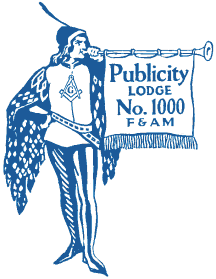

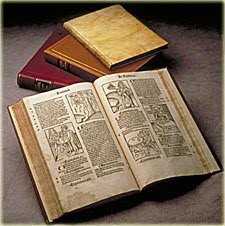


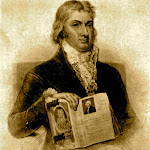




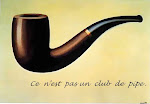
















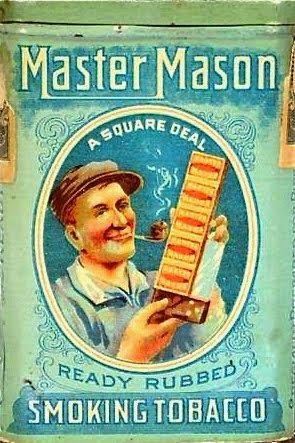


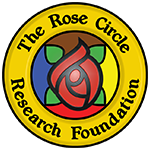










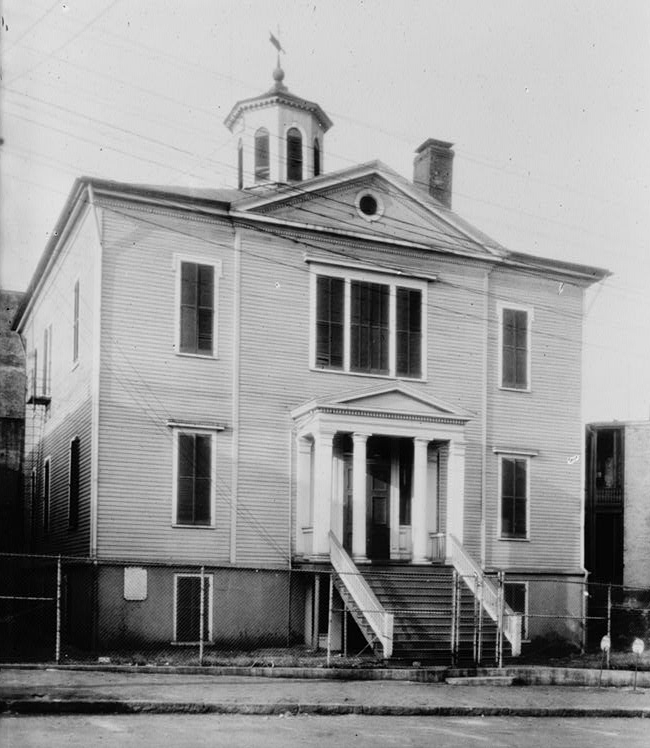
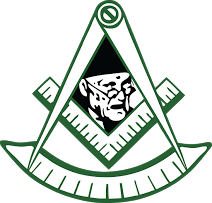




No comments:
Post a Comment